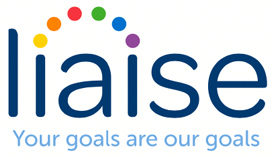Many people wonder if there is a “right” way to interact with a person with autism. The truth is, people with autism are unique individuals just like everyone else with their own set of strengths and challenges. There are no scripted ways that you need to behave around someone with autism, you should simply be courteous and treat them with respect.
With that being said, autism can cause communication difficulties that often make it challenging for people with autism to express themselves and ensure their needs and wants are understood. People with autism may not always behave in ways you would expect. By understanding some of their challenges, you’ll have the knowledge you need to provide better support and build a stronger relationship.
Here are some of the dos and don’ts of interacting with someone with autism, so you can ensure a positive experience and help the person feel comfortable and included.
Don’t Assume a Lack of Understanding
One of the most harmful stereotypes that exist about people with autism is that they lack understanding or intelligence due to their communication challenges. This is simply not the case.
Autism is a spectrum disorder meaning people with autism have a wide range of communication abilities. Although some people with autism experience difficulties with traditional verbal communication, they often excel in other forms of nonverbal communication or have their own unique way of expressing themselves.
All it takes to tap into the wonderful potential of each individual with autism is to understand, value and recognise how they communicate. Some people with autism are visual learners, while others thrive through hands-on experiences or positive reinforcement. Be open to alternative methods of communication and work with the individual to find a way of communicating that ensures they feel understood.
Look for other cues that can help you understand what the person is saying such as facial expression, body language, gestures, eye contact and the context they’re saying it in. Try visual supports, augmentative and alternative communication and other aids to help the person convey their needs and wants.
Avoid Making Assumptions
Assumptions can be harmful, especially when it comes to understanding and interacting with people with autism. Not all people with autism have the same personalities, characteristics or abilities. Avoid making any assumptions, such as that people with autism are nonverbal or have intellectual disabilities. This includes making assumptions that someone with autism must have an extraordinary gift or talent.
All of these assumptions oversimplify the diverse range of capabilities within the autism spectrum. Instead, approach each person with autism as a unique individual with their own strengths and challenges. By not making assumptions, you can get to know and appreciate the person for who they are as an individual.
Be Aware of Sensory Sensitivities
Sensory sensitivities are common among individuals with autism and can significantly impact their experiences in various environments. You can be of great support to someone with autism simply by being mindful of these sensitivities and taking steps to accommodate them.
One way to do this is by providing a sensory-friendly environment. For instance, offering a quiet, dimly lit space can be immensely helpful for someone with autism who is sensitive to loud noises and bright lights. Creating a calming and soothing setting can make a significant difference in reducing stress and anxiety.
Respecting an individual’s need for sensory accommodations is important. This may involve allowing them to wear noise-cancelling headphones or providing weighted blankets for sensory comfort. Try to recognise their sensory needs whilst demonstrating empathy and consideration. This will promote a more positive and comfortable experience for both of you.
Don’t Dismiss or Avoid Communication Differences
People with autism face a range of challenges with verbal and nonverbal communication skills. These challenges may be minimal, like having a hard time picking up on social cues, or they may be substantial, making all forms of communication difficult.
You can accommodate anyone’s communication differences by following these tips:
- Use clear and straightforward language.
- Be patient and allow extra time for processing information.
- Be respectful of their communication style, whether it’s verbal or nonverbal.
- Give them space and avoid invading their boundaries.
- Use visual aids or social stories to help explain complex concepts or upcoming events.
- Avoid sarcasm and abstract language, as some people have difficulty understanding it.
- Minimise distractions and find a quiet environment, if possible.
Some people with autism become easily overwhelmed if too much information is presented at the same time. You can help by presenting ideas one at a time, clearly and calmly. Avoid presenting important information when someone is experiencing big emotions like anger or excitement. It will be difficult for them to concentrate.
This ‘sensory overload’ can happen even from too much eye contact, so do not take it personally if someone with autism avoids making eye contact while speaking to you. Avoid pressuring them to make or maintain eye contact, as this can be uncomfortable.
Avoid Imposing Any Physical Contact
Respecting personal boundaries and preferences for physical contact is essential when interacting with anyone. It’s important to recognise that not everyone is comfortable with physical touch, and people with autism may have specific sensitivities or preferences regarding personal space and contact.
When in doubt, it can be helpful to ask. For instance, try asking the person if they would like a hug or a handshake before reaching to do so. This demonstrates respect for boundaries and can help build a relationship of trust.
Remember that people with autism may experience heightened sensitivities to touch or physical proximity due to sensory processing differences. Be mindful of their personal space and avoid close proximity if they show any signs of discomfort such as pulling away or becoming tense.
Try Not to Stare or Judge Stimming Behaviours
Stimming, short for self-stimulatory behaviours, is a natural and beneficial part of autism. These repetitive movements, sounds, or actions help people with autism regulate sensory input, manage stress, and cope with overwhelming situations.
Rather than viewing stimming as unusual or disruptive behaviour, try and understand that it serves a vital purpose for the individual’s well-being. Avoiding judgement, criticism, or attempts to suppress stimming behaviours (as long as the behaviours are not harmful).
Instead of trying to stop or control stimming, try and create a supportive environment where they can stim freely without feeling judged or misunderstood.
Specialist Support for Autism
Our mission is to enrich the lives of people with autism and enable them to live happy, fulfilling lives. We help people live independently through person-centred autism support services and community-based living.
Every day, at every step of the way, we are here to help you thrive. Contact our friendly team to learn more about our autism care and support services. We look forward to hearing from you.





